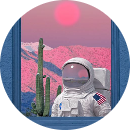Học tại trường
Chưa có thông tin
Đến từ
Đăk Lăk , Chưa có thông tin
Số lượng câu hỏi
24
Số lượng câu trả lời
37
Điểm GP
2
Điểm SP
29
Người theo dõi (21)
Đang theo dõi (30)

Chủ đề:
Unit 12 : A Vacation abroadCâu hỏi:
III.Supply the correct tense, simple past or past continuous of the verbs in parentheses. 1. I (wake) ________________up at 6 o’clok this morning. 2. While her boyfriend was in the army, Rose (write) ________________to him once a week. 3. Phong (study) ________________ computer for two years, but he doesn’t study it now. 4. “What were you doing at 9 o’clock last night?’ -“I (prepare) ________________my math lessons.” 5. It still (rain) ________________when you came in? 6. While I (stay) ________________ in this town, they (repair) ________________the bridge. 7. We looked out of the window. Some children (play) ________________ in the yard. 8. You (not know) ________________much about the regulation at that time, (do) _______you? 9. When Huy was a boy, he often (go) ________________fishing with his father. 10. Daisy (look) ________________ at the flowers when the thief (come) ________________up behind her and (snatch) ________________her handbag.













